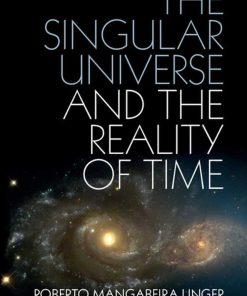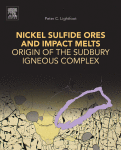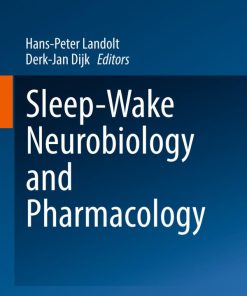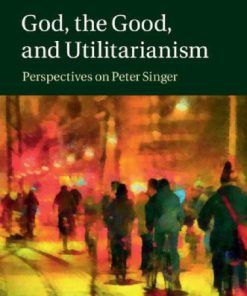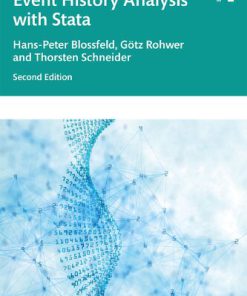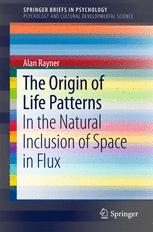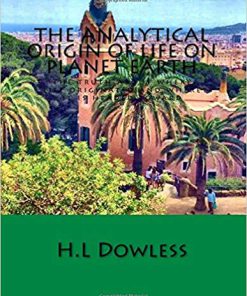On the Origin of Natural Constants Axiomatic Ideas with References to the Measurable Reality 1st edition by Hans Peter Good 3110612380 9783110612387
$50.00 Original price was: $50.00.$25.00Current price is: $25.00.
On the Origin of Natural Constants Axiomatic Ideas with References to the Measurable Reality 1st edition by Hans Peter Good – Ebook PDF Instant Download/DeliveryISBN: 3110612380, 9783110612387
Full download On the Origin of Natural Constants Axiomatic Ideas with References to the Measurable Reality 1st edition after payment.
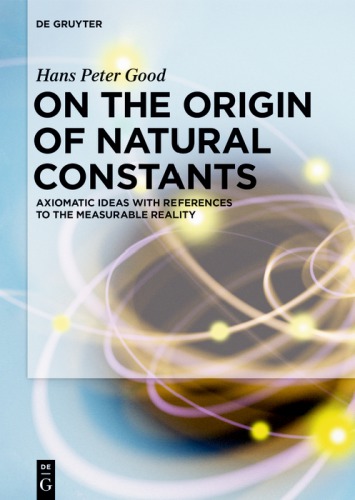
Product details:
ISBN-10 : 3110612380
ISBN-13 : 9783110612387
Author: Hans Peter Good
Just as the circle number π or the Euler constant e determines mathematics, fundamental constants of nature define the scales of the natural sciences. This book presents a new perspective by means of a few axioms and compares the resulting validity with experimental data. By the axiomatic approach Sommerfeld’s mysterious fine-structure constant and Dirac’s cosmic number are fixed as pure number constants. Thanks to these number constants, it is possible to calculate the value for the anomalous magnetic-moment of the electron in a simple way compared to QED calculations. With the same number constants it is also possible to calculate masses, partial lifetimes, magnetic-moments or charge radii of fundamental particles. The expressions used for the calculations, with few exceptions, yield values within the experimental error limits of the Particle Data Group. The author shows that the introduced number constants give even better predictions than the complicated QED calculations of today’s doctrine. In the first part only experimental data from the literature for checking the postulates are used. In the second part the author explains electrical transport measurements with emergent behaviour, which were carried out in a professional environment.
On the Origin of Natural Constants Axiomatic Ideas with References to the Measurable Reality 1st Table of contents:
Part I
1 The David Bohm analogy: a forgotten idea on the origin of mass
2 Universal lengths of atomic physics and statistical physics
3 Charge localization and delocalization
3.1 Metallic liquids
3.2 The universal screening length and the Mott metal-insulator transition
3.3 The nine-dimensional hypersphere as a possible ordering principle and the meaning of π
3.3.1 The mass ratio mp/me
3.3.2 The periodic table of elements
3.3.3 Stability of atomic nuclei
3.3.4 The strongest emission lines of atomic hydrogen
4 The universal length for short-range order
4.1 Properties of glasses
4.2 The Lorenz number for metals
4.3 The rule of Pictet and Trouton
4.4 The Mooij rule
4.5 Amorphous carbon
5 Calculation of universal parameters by means of the David Bohm analogy
5.1 The universal London length
5.2 The elementary volume and the calculation of the reference temperature
5.2.1 The best electrical conductor silver
5.2.2 Bad metals
5.2.3 Metal clusters
5.3 Manifestations of the reference temperature in the physical reality: a selection
5.3.1 The critical temperature of water
5.3.2 The Debye temperature of diamond
5.3.3 The phonon density of states of polycrystalline diamond
5.3.4 The Raman G line of graphite
5.3.5 The Raman line of silicon
5.3.6 The minimum thermal conductivity
5.3.7 The logistic model and collective magnetism
5.4 The Sommerfeld constant as a number constant
5.4.1 The magnetic-moment anomaly of the free electron
5.4.2 The Shahar Hod limit
5.5 The universal interaction particle as a consequence of the reference temperature
5.5.1 Localization energy of m0
5.5.2 The electron neutrino
5.6 The geometrization of physical quantities
5.7 The universal particle number density
5.7.1 The critical current limit
6 The universal energy density
6.1 The origin of the electron mass me and its definition by the Planck constant h and the speed of light c
6.2 The hyperfine splitting of atomic hydrogen and the problem of molecular hydrogen in cosmic space
6.3 The universal intergalactic length scale
6.4 An estimate of the upper limit of the neutrino mass in the beta decay
6.5 The gravitational self-energy and the connection of the Newton constant G to h and c
6.5.1 The calculation of Newton’s constant G and the problem of atomic stability
6.5.2 A tour to the world of pions
6.5.3 A tour to the world of condensed matter
7 Universal parameters of collective vibrations of the plasma
7.1 Amorphous germanium
7.2 Si:P near the metal–insulator transition
8 The duality relation or the connection between microcosm and macrocosm
8.1 The mean charge radius of the proton and the nucleon density of extended nuclei
8.1.1 The nucleon density of extended nuclei
8.2 The parameterizing of nuclear binding energies and the associated energy scale
8.2.1 The light quark masses of baryonic matter in the reductionist view of the Standard Model
8.3 The universal gravitational interaction length and the MOdified Newtonian Dynamics model
9 The classical concept of the electrostatic field energy
9.1 The electrostatic pressure and the universal energy density
9.1.1 The model of Hendrik Casimir for the calculation of the fine-structure constant
9.1.2 The experiment of U. Mohideen and Anushree Roy
9.1.3 The experiment of H. B. Chan and coworkers
9.2 The total field energy and the corresponding temperature of the different field types
9.2.1 The electron–positron reaction
9.2.2 The primordial abundance of 4He
9.2.3 Remarks on T(r = rrho)
9.2.4 The spatial hysteresis of the microelectromechanical actuator
9.2.5 The photosphere of the sun or the energy scale of stars
9.2.6 The 7Li abundance of stars
9.2.7 The solar corona
9.2.8 Grote Reber
9.3 Raman lines of diamond and graphite: Are they based on interactions with fields?
9.3.1 Single-crystal sp3-hybridized diamond
9.3.2 Highly oriented pyrolytic sp2-hybridized graphite
9.3.3 Disordered sp2-hybridized graphite
9.3.4 Splitting of the G line of graphite by aromatic adsorbates
9.3.5 The dependence of certain Raman lines on the excitation energy
9.4 The Boson peak and the thermal conductivity plateau in amorphous materials
9.4.1 The plateau in the thermal conductivity of amorphous materials
9.5 Rydberg atoms: the transition from quantum mechanics to classical physics
10 The radiation formula of Max Planck
10.1 The diffuse microwave background radiation and the connection to the reference temperature
10.2 The diffuse background radiation at high energies and the connection to the energy scale of nuclear binding
10.3 The interdependence of h, c and the Boltzmann constant kB
11 The gravitational fine-structure constant αgrav as a number constant and the connection to α
11.1 Formulaic connection between astronomy and atomism
11.1.1 The idea of Ernst Mach
11.1.2 Neutron stars
11.1.3 The Dirac conjecture about the connection of αgrav with αgeom
11.2 The universal Fermi constant as a number constant and the connection to gravity
11.3 Particle lifetime ratios
11.4 Representation of the anomalous magnetic moment of the muon by means of coupling constants
11.5 The Z and W bosons
11.5.1 The particle number density n and the mass mZ
11.6 The collective magnetic interaction as a number constant and the associated energy scale
11.6.1 The magnetic coupling constant of the long-range exchange interaction
11.7 Representation of the anomalous magnetic moment of the electron by means of coupling constants
12 Interpretations of astronomical measurements with universal parameters
12.1 The total mass density and the Hubble parameter
12.1.1 The mean total mass density
12.1.2 The radiation temperature Trad
12.1.3 The Hubble parameter H0
12.1.4 The Jeans length: an interesting identity
12.1.5 The quantization of redshift: a controversial topic
12.2 Interpretation of two experimental findings of cosmic radiation by means of coupling constants
12.2.1 E. Regener: the permanent ionizing primary radiation
12.2.2 The cosmic ray energy spectrum
13 Our star – the sun
13.1 The spectral radiant flux density: the transition between disturbed and quiet solar activity
13.2 Interpretation of the critical frequency of the ionosphere by means of universal parameters
13.3 The electric sun hypothesis: an alternative view of the internal energy source
14 Phenomenological cataloging of particles with Hall fractions
14.1 The muon–electron mass ratio
14.2 Mass ratios of other particles
14.2.1 Compilation of mass ratios
14.3 The transformation of the muon
14.4 Transformations of other particles
14.5 The exotic positronium atom
14.5.1 Hyperfine splitting
14.6 Magnetic moments of heavy particles
14.7 Charge radii of light hadrons
15 Interpretation of hydrogen-like systems with α as a number constant
15.1 The correction or scaling factor γ
15.2 Phenomenological extension of the Dirac–Sommerfeld model
15.3 The 1S–2S transition in atomic hydrogen and the famous Lamb shift
15.4 Ionization energies and the interaction of the electron with the nucleus
15.5 The hfs and the Fermi contact formula
15.5.1 Hydrogen: the most accurate hfs measurement ever made
15.5.2 Muonic hydrogen (μp)
15.5.3 Deuterium
15.5.4 Muonic deuterium (μd)
15.5.5 Muonium (Mu): a door to a different view
15.6 The spin g-factor of the electron in 12C5+, 16O7+ and 28Si13+
Part II
16 The boundary between semimetal and insulator
16.1 Electrical transport measurements of thin film resistive layers with mesoscopic geometries
16.1.1 Short description of the samples used and the measuring principle applied
16.2 The temperature dependence of the electrical resistance
16.2.1 The ab plane: normalization of the measured data with the reference temperature τ
16.3 Geometry dependence of resistivity
16.3.1 Width dependence at constant length and constant temperature: the existence of critical widths
16.3.2 Length dependence at constant width and constant temperature: the existence of critical lengths
16.3.3 Temperature behavior with variable geometry: pronounced size effects
16.4 Thermal hysteresis as a result of nonlinear behavior
16.4.1 The fingerprint in the TCR versus T characteristic
16.4.2 Influence of the size on the thermal hysteresis
16.4.3 Indications of the existence of a basic energy scale
16.5 Emergent behavior of electrical transport
16.5.1 Measurements alpha
16.5.2 Measurements beta
16.5.3 Measurements gamma
16.5.4 Measurements delta
16.5.5 Measurement epsilon
16.5.6 Measurement zeta
People also search for On the Origin of Natural Constants Axiomatic Ideas with References to the Measurable Reality 1st:
on the origin of natural constants pdf
explain the concept of naturalism
on the origin of consciousness
origin of axiom
axioms of natural numbers
Tags: the Origin, Natural Constants, Axiomatic Ideas, References, Measurable Reality, Hans Peter Good
You may also like…
Physics - Theoretical Physics
Business & Economics - Industries
Politics & Philosophy
God the good and utilitarianism perspectives on Peter Singer First Paperback Edition Perry
Science (General)
Politics & Philosophy - Anthropology
Language Pangs: On Pain and the Origin of Language Ilit Ferber
Science (General)
Politics & Philosophy - General & Miscellaneous Philosophy




